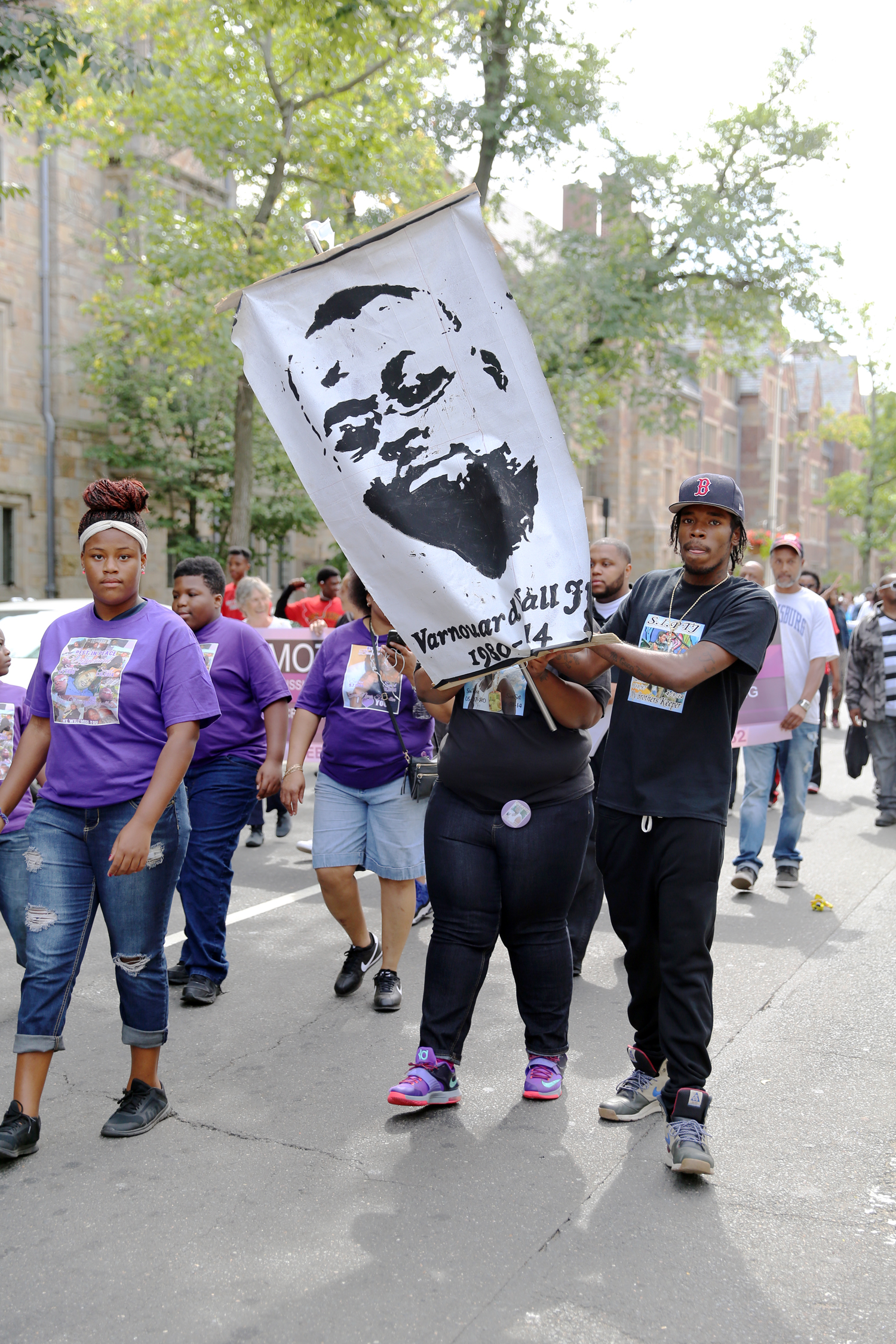
To the pounding of drums, around 300 anti-violence protesters marched through the streets of New Haven on Saturday, temporarily interrupting traffic as the rally wound through downtown and ended in Dixwell.
Calling attention to high homicide rates in the city, the rally was hosted by the Bereavement Care Network — an organization that helps families touched by violence — and was joined by a coalition of youth groups, dance troupes and grieving families. The rally, in its third year, called particular attention to youth, who make up the demographic most often involved in gun violence in the city, according to protesters and local leaders.
Organizers said the route of the rally — from Chapel to York Street, then onto Broadway and up Dixwell Avenue — was intended to make downtown residents more aware of the gun violence that happens outside the center of the city. The event coincided with Yale’s Family Weekend, which brought hundreds of parents and siblings to campus. But despite the increased number of people in New Haven and the protest’s path through the heart of campus, Yale students interviewed said they were largely unaware of the protest’s purpose.
Saturday’s rally came in response to persistent violence in the city over the past few years, much of it involving young men. In January 2014, Varnouard Hall was shot and killed in Fair Haven at the age of 33. One of his best friends, Erica Green, marched in the rally with a sign bearing his face. In April, 16-year-old Jericho Scott died of gunshot wounds in Fair Haven. By August, New Haven was mourning its 11th homicide of the year. Still, the city’s homicide rate has fallen in recent years, with 2014 seeing the fewest killings in a decade.
But protesters said the numbers are still too high.
“So many kids are losing their lives to violence,” said Kim Mozell, a member of the anti-violence group Mothers Demand Action. She said her son, nephew and cousin were all shot and killed in the city. Mozell added that the protest aimed to support the parents of victims of violence, especially through bereavement care.
City officials said reducing gun violence is a slow process that both city and community organizations must confront together. Although Mayor Toni Harp did not walk in the rally, she spoke to the protesters when they gathered outside Wexler-Grant School on Foote Street at the end of the protest, emphasizing the role of small communities in reducing violence. During her tenure, Harp has supported city initiatives like Youth Stat — a group of city agencies that shares data about young people in New Haven — community policing and early childhood education. But she emphasized that grass-roots groups are essential in preventing gun violence and supporting its victims.
“The one thing that a community can do in good times and bad is come together,” Harp said. “We are working with everyone to try to make sure that we can eliminate youth violence in our city.”
Tyesha Walker, president of the Board of Aldermen, said government policies like community policing can only do so much to reduce violence, adding that violence affects everybody in the city, regardless of the neighborhood.
Aided by drums and bullhorns, the rally attracted significant attention in the downtown area on Family Weekend, with parents and students lining the sidewalks as the rally moved through the Broadway Shopping District. Yet several students interviewed said they were unaware of the protest or its message. Kathryn Ward ’18, who briefly saw the rally, said she had thought the drummers were the Yale Precision Marching Band, not anti-violence protestors. Tamia Tripp, a member of the Bereavement Care Network, said she was not surprised that students were unaware of the issues the protest raised. The violence that occurs in other neighborhoods of New Haven rarely gets the attention of people living downtown, she said.
Homicide was not the only issue for the protesters, who said violence has its roots in drug use, broken families and unemployment. Karen Tyson, director of Prosperity House Inc., said youth violence is largely caused by drug use among young men who lack stable families and jobs.
“The violence in our city is so out of control that we can’t just rely on the police and the mayor to handle this alone,” said Darrell McClam, the vice president of the Bereavement Care Network. He called on the entire city to participate in the fight against violence. “Not only is the person who died a victim, but also the family members who are left behind.”
Contact NOAH DAPONTE-SMITH at
noah.daponte-smith@yale.edu and
FINNEGAN SCHICK at
christopher.schick@yale.edu .







